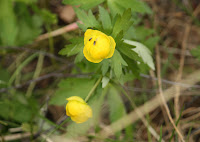The day started with a lecture by Patrick Brouder about the Tourism and the climate change in Swedish mountains. Patrick Brouder is a PhD student at the Department of Geography in Umeå University. His research on Nature-based tourism is under the auspices of the Outdoor Recreation in Change (Friluftsliv i förändring) Programme which is supported by the Swedish Environmental Protection Agency (Naturvårdsverket).
Then we had a guided tour of Abisko facilities and outskirts with Lars Olof Björn. Lars Olof Björn is professor emeritus of Lund University and presently professor at the South China Normal University in Guangzhou. He knows Abisko well since many of his field experiments have been conducted at the Abisko Scientific Research Station.
After lunch we listened to Christine David from the IPEV (French Polar Institute) speaking about the importance of long term monitoring in Polar Regions through the example of ozone depletion. Christine David, recently appointed Deputy-director of the IPEV, the French Polar institute, but is still a scientist at the IPSL (Institut Pierre Simon Laplace), working on Stratospheric Ozone, Antarctic Stratosphere and its interactions with climate.
Leif G. Anderson, then, presented a lecture on Biogeochemical processes in the Siberian Shelf Sea and their implication for carbon fluxes. Leif G. Anderson is Professor in hydrosphere sciences at the Department of Chemistry at the University of Gothenburg. He was part of the ISSS (International Siberian Shelf Study) international research expedition including participants from Russia, Sweden, USA and other nations that travelled the length of the Siberian coast to the East Siberian Sea in August and September 2008.
The last thing we did this day was listening to group 1 student presentations. All students have been divided into four groups. Each group is responsible for summarizing one or two specific days activities after having presented themselves and their research projects. Group 1 is composed of Tim Horstkotte, Nathalie van der Putten and Erik Lundin.












No comments:
Post a Comment